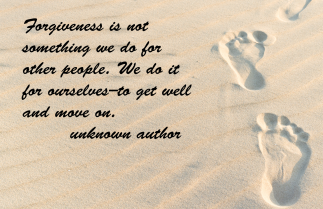Many parents are confused regarding how to parent through COVID-19. This entry addresses three qualifications, three guidelines and two common questions.
Three qualifications:
 1. Most children who were free of psychiatric problems prior to being exposed to a trauma do not develop a psychiatric condition after the exposure. Children can be surprisingly resilient.
1. Most children who were free of psychiatric problems prior to being exposed to a trauma do not develop a psychiatric condition after the exposure. Children can be surprisingly resilient.
2. Advice from mental health professionals is most effective when it supports and informs, but does not supplant, your intuition. You are one of the world’s leading experts on your child. Suggestions from experts should be filtered through that lens.
3. Some of the suggestions below would not apply for children who have become symptomatic; for such children it would be best to consult with a mental health professional in order to develop a tailored plan.
Three guidelines:
1. Intermittently let your children know that you are available to talk but do not try to force a conversation. Children are like adults; sometimes we cope by trying to put something out of our mind. Assuming the topic has upset her, your child might not be in the mood to talk about such at the same time as you. Following your child’s lead can communicate that you are sensitive and respectful.
2. Try to create a venue and manner that makes it easier for your child to communicate with you. For instance, some teens might find it easier to discuss difficult feelings and thoughts while not making eye contact (e.g., while driving) while younger children may communicate through their play. Regardless of the age range, though, it is important to not jump in too quickly with reassurances. Once we parents start self- disclosing, even if for the purpose of being reassuring, it can have a dampening effect on our child’s self-disclosure.
Once your child has finished with his or her initial statements reflect back what you’ve heard and provide empathy (e.g., “I understand why you could be  feeling more scared these days”). This will feel very difficult to do as your entire being wants to be reassuring, but suppress that urge initially. This may cause your child to tell you even more. When it seems that your child is finished that would be the time to offer your thoughts and feelings.
feeling more scared these days”). This will feel very difficult to do as your entire being wants to be reassuring, but suppress that urge initially. This may cause your child to tell you even more. When it seems that your child is finished that would be the time to offer your thoughts and feelings.
3. Let your awareness of your child’s developmental level and/or vulnerabilities guide your self-disclosure. No matter your child’s age, it is important to not say things that you do not really believe. Doing so is often ineffective and may damage your credibility. Selective truth telling would seem to be advisable; selective based upon your child’s developmental level and vulnerabilities.
For younger or vulnerable children you may want to only share those thoughts and feelings that are positive. For older children, who are also doing well, you may choose to share some thoughts and feelings that are unpleasant. Sometimes life is painful; honestly acknowledging that, with an older child who can handle it, can be educative and facilitate a closer relationship.
Two common questions:
1. What do I say to my children about our safety?
Much of this will be determined by how you rationally answer this question for yourself. What do you believe are the odds that your family will experience significant physical or financial consequences from COVID-19? Once you have answered these questions for yourself, selective truth telling–based on the principles listed above–may be advisable.
2. Is there anything I can do to protect my children from all the fallout?
Any of the following may help:
• Aggressively pursue your own adjustment. If I am afflicted I will have a more difficult time helping my child. If I believe we are significant medical or financial risk, then it ‘s important to develop an action plan for coping with and responding to this. Consultation with a good psychologist or mental health professional can be very helpful in this regard. Many psychologists now offer video conferencing services.
 • Try to maintain as many functional rituals and routines as you can. Few things give a child a clearer message that life is safe than adaptive routines and rituals (e.g., maintaining the same routines at meal time, bed time, birthdays).
• Try to maintain as many functional rituals and routines as you can. Few things give a child a clearer message that life is safe than adaptive routines and rituals (e.g., maintaining the same routines at meal time, bed time, birthdays).
• Keep your child’s developmental level and wellness in mind when deciding how much he or she should have access to ongoing developments in the news. A good guideline for anyone stressed by COVID-19 new stories is to limit the exposure to once a day or less.
• Try to turn a sense of passivity into an active plan for healing and helping. Your family may decide to pray for the suffering, make donations, write letters, create art, and join online efforts to heal and to help.
• Think of any self-quarantines as a welcomed staycation instead of an apocalyptic retreat. How many of we parents have had the thought, “when we get some extra time together we’ll…” There are so many possible ideas: have a family campout in the family room, play balloon baseball, have a bracketed gaming tournament (including making up new and fun games like who can balance a grape on their face the longest), view old family videos, have a cupcake baking contest or any one of a hundred other ideas you can get by doing an internet search for “staycation ideas.” Doing this well will cause your child or teen, 10-15 years from now, to reminisce with a warming smile, and say, “remember in 2020 when we…”
• Once every day or so do an internet search for “good news COVID-19.” In doing this I’ve learned that new cases in China have dropped dramatically, that some of the first identified cases in the U.S. are now well and the early science out of China indicates that warmer weather slows the transmission of COVID-19 For teens, reviewing a graph like this may be helpful.
learned that new cases in China have dropped dramatically, that some of the first identified cases in the U.S. are now well and the early science out of China indicates that warmer weather slows the transmission of COVID-19 For teens, reviewing a graph like this may be helpful.
• Maintain a healthy lifestyle for the entire family. This would include things like maintaining good diets and schedules for physical activity and sleep. Social distancing does not require becoming shut-ins. Activities like walking in nature, biking and stargazing may be safe, practical and energizing.
• Manifest for your family the psychological truth: crisis = pain + opportunity. COVID-19, like all pain, is often akin to a dragon guarding treasure when it does not kill us. Yes, we need to experience the pain and give each other empathy for it. After all, denial can take a heavy toll when it’s the driver. But, then we can wonder where the treasure is. If your children can reach age 18 knowing this deep truth about suffering they will have a Captain America Shield against life’s slings and arrows.
• If you child seems to be having a hard time adjusting, or otherwise has changed for the worse, seek out a professional consultation. Doing so may improve your child’s adjustment. To find a psychologist click here.
41.515924
-75.670939











 feeling more scared these days”). This will feel very difficult to do as your entire being wants to be reassuring, but suppress that urge initially. This may cause your child to tell you even more. When it seems that your child is finished that would be the time to offer your thoughts and feelings.
feeling more scared these days”). This will feel very difficult to do as your entire being wants to be reassuring, but suppress that urge initially. This may cause your child to tell you even more. When it seems that your child is finished that would be the time to offer your thoughts and feelings. • Try to maintain as many functional rituals and routines as you can. Few things give a child a clearer message that life is safe than adaptive routines and rituals (e.g., maintaining the same routines at meal time, bed time, birthdays).
• Try to maintain as many functional rituals and routines as you can. Few things give a child a clearer message that life is safe than adaptive routines and rituals (e.g., maintaining the same routines at meal time, bed time, birthdays). learned that new cases in China have
learned that new cases in China have 




 turkey day? Sure, even a broken clock is right twice a day. But, we’re talking odds here. Best to belly breathe, change the topic, or use whatever you may to calm yourself down.
turkey day? Sure, even a broken clock is right twice a day. But, we’re talking odds here. Best to belly breathe, change the topic, or use whatever you may to calm yourself down. √ Empathy. Those you are with may express sadness or share other failings or frustrations. Empathy and agreement are different things. Being empathic says that you care, even if you privately disagree.
√ Empathy. Those you are with may express sadness or share other failings or frustrations. Empathy and agreement are different things. Being empathic says that you care, even if you privately disagree. This is the third post in a series on grieving. The first regards grieving in the first year or two. The second regards how to help a child to grieve. In this post I’ll review factors that promote post-traumatic growth (PTG) after a severe loss.
This is the third post in a series on grieving. The first regards grieving in the first year or two. The second regards how to help a child to grieve. In this post I’ll review factors that promote post-traumatic growth (PTG) after a severe loss. suggest that the circumstances of the loss had inherent meaning. While one or both of those things can be true, they are often not. So, the first thing to wonder, after your grief has subsided enough, is, what treasure has this (often terrible) loss made available to you?
suggest that the circumstances of the loss had inherent meaning. While one or both of those things can be true, they are often not. So, the first thing to wonder, after your grief has subsided enough, is, what treasure has this (often terrible) loss made available to you? 4. Practice forgiveness. This is the hardest thing for many of us to do, and our culture often misunderstands the nature of it (e.g., forgiveness is not allowing ongoing damage, it does not require the other person to express remorse, it does not involve minimizing, or require forgetting, the assualt). Click
4. Practice forgiveness. This is the hardest thing for many of us to do, and our culture often misunderstands the nature of it (e.g., forgiveness is not allowing ongoing damage, it does not require the other person to express remorse, it does not involve minimizing, or require forgetting, the assualt). Click 
 No engaged parent is happier than her least happy child. It is very difficult for any of us to see our children in pain. However, grieving is adaptive suffering and knowing how to help our children through it, instead of suppressing it, is an important parenting skill. I will split my tips on this topic up into two sections: when you are not affected directly by the loss and when you are.
No engaged parent is happier than her least happy child. It is very difficult for any of us to see our children in pain. However, grieving is adaptive suffering and knowing how to help our children through it, instead of suppressing it, is an important parenting skill. I will split my tips on this topic up into two sections: when you are not affected directly by the loss and when you are. checking in on a semi-regular basis; it isn’t sufficient to say to a child, “let me know if I can help.” Again, though, the emphasis should be that it is your child’s choice whether to talk or not when the other person reaches out.
checking in on a semi-regular basis; it isn’t sufficient to say to a child, “let me know if I can help.” Again, though, the emphasis should be that it is your child’s choice whether to talk or not when the other person reaches out. • Make sure to spend one hour a week doing special time. You can get a summary of how to do special time by clicking
• Make sure to spend one hour a week doing special time. You can get a summary of how to do special time by clicking  your grieving. You may go through a period when you are grouchy or unmotivated or dour. Likewise, your child may go through a period when he is defiant or sullen or rejecting of your affection. These are often transient reactions; part of what helps them to not take root is to not overreacting to them.
your grieving. You may go through a period when you are grouchy or unmotivated or dour. Likewise, your child may go through a period when he is defiant or sullen or rejecting of your affection. These are often transient reactions; part of what helps them to not take root is to not overreacting to them.










